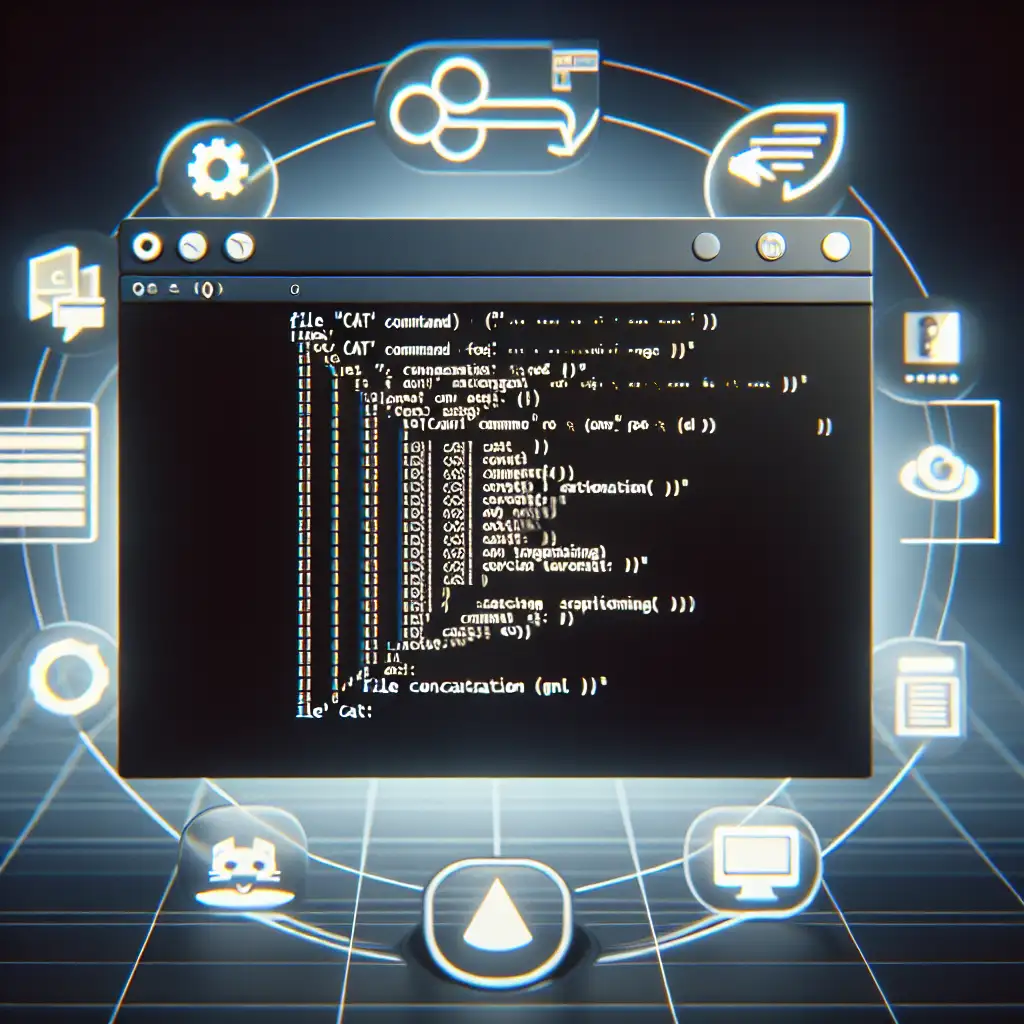Mastering the Cat Command: A Critical Linux Utility for Engineers
On modern Linux systems, cat (GNU coreutils v9.1+) is ubiquitous. Most engineers encounter it early, but its practical reach extends well beyond displaying file contents. In operations, scripting, and troubleshooting, cat excels at fast-file concatenation, inspection of control characters, ad-hoc file assembly, and even automation building blocks—if you leverage its full argument set.
Beyond Display: Core Use Cases
Rapid Content Inspection
cat /etc/issue
No page-buffering, no interactive scroll. For config files under 500 lines, this is often faster than less. But with large logs or when analyzing multi-gigabyte files? Use less or head/tail—cat will flood your terminal, and scrollback becomes a liability.
Concatenation and Batch Assembly
cat nginx.conf fragments/tls.conf > tmp.conf
Concatenating multiple configs, especially in deployment jobs, is common. Always write into a new file. Appending (>>) is viable for log aggregation:
cat deployment.log >> all-logs-2024-06.txt
Mistake to avoid: never use cat file1 file2 > file1. You’ll zero the destination before reading.
Workaround:
cat file1 file2 > tmp && mv tmp file1
Ad-hoc File Creation—No Editor Required
Need a stub config or placeholder license file in CI? cat handles standard input:
cat > VERSION
2.1.4
<Ctrl+D>
Trade-off: No confirmation prompt—existing files are blindly overwritten. Gotcha for automation unless combined with safeguards or set -o noclobber.
For Diagnostics: Exposing Invisible State
Hidden control characters and whitespace can break YAML, systemd unit files, or scripts. cat helps reveal these—use its transformation flags:
| Flag | Effect |
|---|---|
| -n | Number all output lines |
| -E | Mark end of each line with $ |
| -T | Show tabs as ^I |
| -v | Visualize non-printing/non-ASCII chars (excl. tabs/ends) |
Sample:
cat -n -E broken.conf
Reveals trailing spaces or unexpected blank lines mid-script.
Another real-world check:
cat -v /var/lib/app/data.bin | grep '\^M'
CR (^M) from Windows files often escapes notice—except when your deployment breaks.
Pipeline Assembly in Scripting
In automation (e.g., bash 5.1), concatenating both static files and command output streamlines reporting and artifact generation:
cat <(ls -lh /srv/app/releases) <(date) > deploy-summary.txt
This approach merges runtime state with static file content, handy for release notes or diagnostic bundles.
For portable scripts: remember, process substitution (<()) syntax requires bash or zsh—won't work unmodified in sh.
Not-So-Obvious: Cat as a Null Filter
Sometimes pipeline errors arise from missing stdin. Use cat as a neutral pass-through, for example:
some_command | cat | grep warning
Not strictly necessary, but can help coax legacy tools expecting a streamable file descriptor.
Real-World Troubleshooting
Overwriting Gotcha
cat file1 file2 > file1
This is a classic error. The shell truncates file1 before cat reads it—result: data loss. In systems with write-heavy workflows, such as batch ETL scripts, prefer always writing to a separate destination, then atomic mv if needed. Snapshots (via LVM or Btrfs) can mitigate risk but introduce their own overhead.
Hidden Characters: YAML Parsing Fails
An engineer debugs a Kubernetes manifest; kubectl apply -f fails with parsing errors. Quick diagnose:
cat -A manifest.yaml | grep '\^M'
Result:
apiVersion: v1^M$
kind: Pod^M$
CRLF endings from Windows interfere with YAML parsers—transform with dos2unix or cat -v.
Summary Table: Key Flags
| Option | Description | Typical Use Case |
|---|---|---|
| (none) | Basic output, fast viewing | Small config, README |
| -n | Line numbering | Debugging, code review |
| -E | Highlight end-of-line | Detect trailing/empty lines |
| -T | Show tabs | Whitespace issues in Makefiles |
| -v | Show non-printing chars | File encoding, binary inspection |
Final Notes
- Always confirm output targets to avoid truncation.
- Use
cat --helpandman cat(coreutils v8.0+) for full flag reference. - Consider alternatives:
tac(for reversed reading); orawk/sedfor advanced manipulation. - For compliance-sensitive environments: remember that
cathas no audit trail or access controls—prefer authenticated tools if required.
Note: There’s no single best way to inspect files. cat is a foundational utility—not perfect, but indispensable._
Further Reading
- GNU coreutils cat documentation
man cat- See also:
tac,more,less,head,tail
No single utility handles every use case, but understanding the boundaries of cat is essential for robust Linux engineering workflows.
